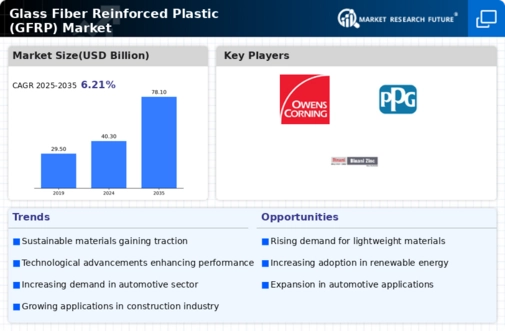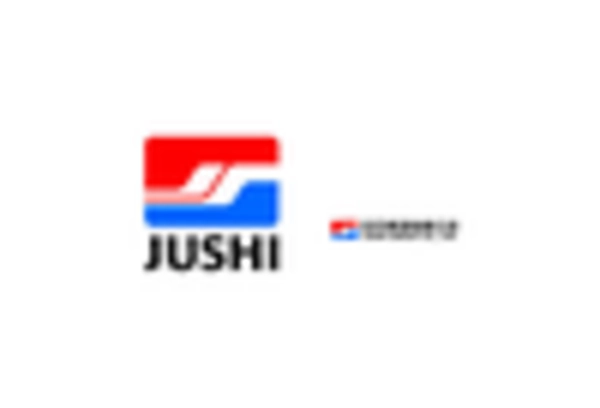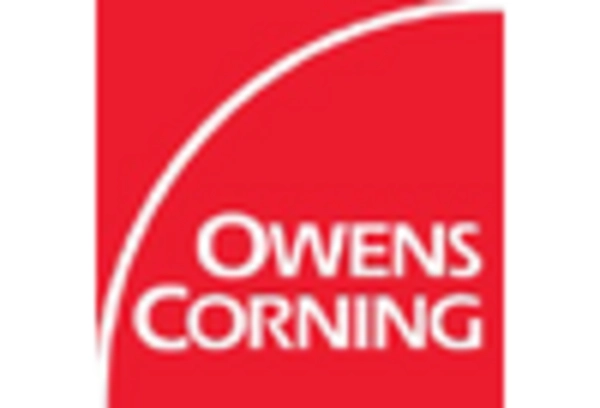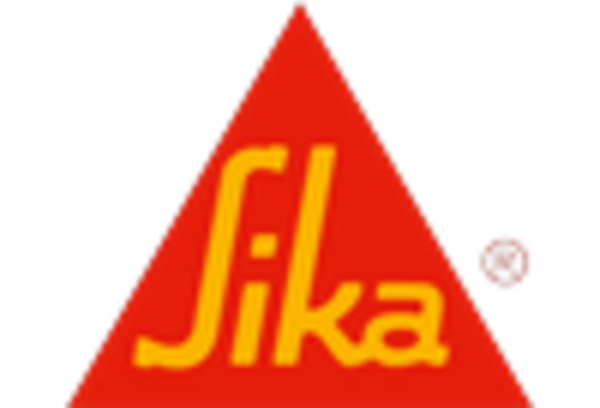Market Share
Glass Fiber Reinforced Plastic GFRP Market Share Analysis
Market share positioning strategies in the Glass Fiber Reinforced Plastic (GFRP) market are crucial for companies aiming to carve out a competitive edge in this dynamic industry. In this arena, several strategic approaches are employed to capture and retain market share effectively.
The glass fiber reinforced plastic market analysis, and glass fiber reinforced market trends the major factor acting as the driving force is the increase in industrialization, rapid demand of low weight glass fiber, moldability and proper finish of the surface of glass fibers increase the expansion of the industry. Carrying out more of the research activities on the glass fibers expands their demand. These reinforced plastic glass fibers are the largest product that is in high demand for the transportation industry increasing its growth. Materials giving high strength and having thermal resistant capability raise their demands.
Firstly, differentiation stands as a cornerstone strategy. In a crowded marketplace, companies strive to distinguish their GFRP products from competitors'. This could involve innovations in product design, such as introducing novel textures or shapes, or enhancing functional attributes like durability and lightweight properties. Moreover, differentiation extends beyond the product itself; it encompasses branding, customer service, and overall customer experience. By offering unique value propositions, companies can attract customers and solidify their market presence.
Another pivotal strategy involves pricing. Competing on price can be a double-edged sword in the GFRP market. While lowering prices may attract price-sensitive customers, it could potentially erode profit margins. Conversely, premium pricing can position products as high-quality and exclusive, appealing to a niche market segment willing to pay for superior features or services. Striking the right balance between affordability and perceived value is crucial for companies to gain a competitive advantage while maintaining profitability.
Furthermore, market segmentation plays a vital role in market share positioning. By dividing the market into distinct segments based on factors such as geographic location, application, or customer demographics, companies can tailor their products and marketing efforts to meet specific needs and preferences. For instance, targeting industries like automotive, construction, or aerospace with tailored GFRP solutions allows companies to focus their resources more effectively and penetrate niche markets where they can establish themselves as leaders.
Additionally, strategic partnerships and alliances can significantly impact market share positioning. Collaborating with suppliers, distributors, or complementary businesses can broaden a company's reach and enhance its capabilities. For instance, partnering with research institutions or universities can facilitate access to cutting-edge technologies and expertise, enabling companies to develop innovative GFRP solutions ahead of competitors. Similarly, forming strategic alliances with established brands can lend credibility and visibility to smaller players, helping them gain traction in the market.
Moreover, continuous innovation is imperative for maintaining and expanding market share in the GFRP market. In an era of rapid technological advancement, companies must stay ahead of the curve by investing in research and development to improve existing products or develop new ones. Whether it's enhancing material properties, exploring sustainable manufacturing processes, or integrating smart technologies, innovation is key to meeting evolving customer demands and staying competitive in the market.
Lastly, effective marketing and communication strategies are essential for market share positioning. Building a strong brand presence through targeted advertising, social media engagement, and participation in industry events can raise awareness and generate interest in GFRP products. Moreover, fostering transparent communication channels with customers and soliciting feedback can help companies understand market trends and adapt their strategies accordingly, thereby strengthening their position in the market.

















Leave a Comment